Compromising to compete with consumer-oriented brands, Focal descends into the exploding wireless ANC headphone market.
How do you balance a reputation for crafting the finest high-fidelity headphones with the requirements to compete in a more consumer-oriented product line? Travel-focused, wireless headphones with Active Noise Cancelling (ANC) are the newest rage, traditionally dominated by Bose and Sony offerings. And lately, as is its way, Apple has become a new higher-end option in this emerging market.
This growing headphone craze has made audiophile companies consider how they might carve a piece of this lucrative pie.
- Typically superb Focal design language
- Stable Bluetooth connection
- Comfortable and relatively lightweight
- Good functioning ANC and Transparent modes
- Buttons are easily manipulated
- Simple app
- Cheap plastic cables are unbefitting
- ANC must be enabled for listening
- Plastic bits don’t seem up to Focal’s high standards
- Sound good but still like a pair of ANC headphones
- Premium cost
But for a ‘sound-quality-is-the-ultimate-goal’ audiophile company like Focal, there are limitations that they must comply with to compete in this market. Compromises for a company that has had little reason to compromise in the past.
Weight. Size. Price. ANC and Bluetooth impacts to sound quality. Compromises, indeed.
Wireless ANC headphones can’t be too heavy or large as they are intended to be worn while you are on the go. Ideally, while commuting on a plane or train, they must remain comfortable for hours while actively blocking outside noise.
ANC is a software solution designed to alter the sound. And, of course, Bluetooth has its own set of limitations regarding bandwidth and resolution, depending on implementation and codecs.
Bose and Sony have set the ANC headphone market price between USD$300-$500, with the new Apple AirPods Max stretching the range to USD$550. Focal hopes they can push that upper limit to USD$800.
So how do they convince consumers to abandon the proven competition and go for something ‘better’?
Enter the Bathys.
Focal promises that the Bathys balance active noise cancelling with high-fidelity sound. While the electronics are made overseas, the Bathys use a new, smaller, Aluminium-Magnesium ‘M’-shaped domed driver, made in France.
Balancing weight with luxury, the Bathys’ yokes are constructed from Magnesium, with real leather on the headband and ear pads, and Aluminium and plastic bits making up the rest. While the Bathys design follows Focal’s distinctive design language, their overall size is reduced to be lighter, more compact, and more comfortable for travelling.
Can the Bathys successfully find the middle path? Can they achieve a balance between a luxury brand and a mass-consumer product? Or will what makes a Focal product special be lost in the compromises required to compete in a new arena?
Consider this your complimentary ticket to skip the lines, settle comfortably in your seat, and join us as we travel to find out.
Company Overview
Founded in 1979 and located in Saint-Étienne, France, Focal specializes in designing and manufacturing high-end audio loudspeakers and headphones. They develop all their products on-site and perform the majority of manufacturing in-house.
Focal states their ultimate goal is to reproduce the artist’s work as faithfully as possible by crafting products capable of ultimate audio fidelity. All the while, they maintain a stunning design culture that is distinctively their own.
“Flawless performance with a distinguished style.” – Focal
Technical Specifications
- Form: Wireless, Closed-back, Over-ear
- Drivers: 40mm Aluminium-Magnesium speaker drivers
- Harmonic Distortion: <0.2% @1kHz
- Frequency Response (Hz): 15 Hz – 22 KHz
- Removable Cable: Y
- Source Jack: 3.5mm, TRS
- Cup/Shell Jack: 3.5mm, USB-C
- Bluetooth Version: 5.1 Multipoint
- Bluetooth Audio Codec: SBC, AAC, aptX, AptX Adaptive
- Battery Life (hrs): Bluetooth 30 hours, Jack mode 35 hours, USB DAC 42 hours
- Mic: Y, 8
- Weight (g): 350g
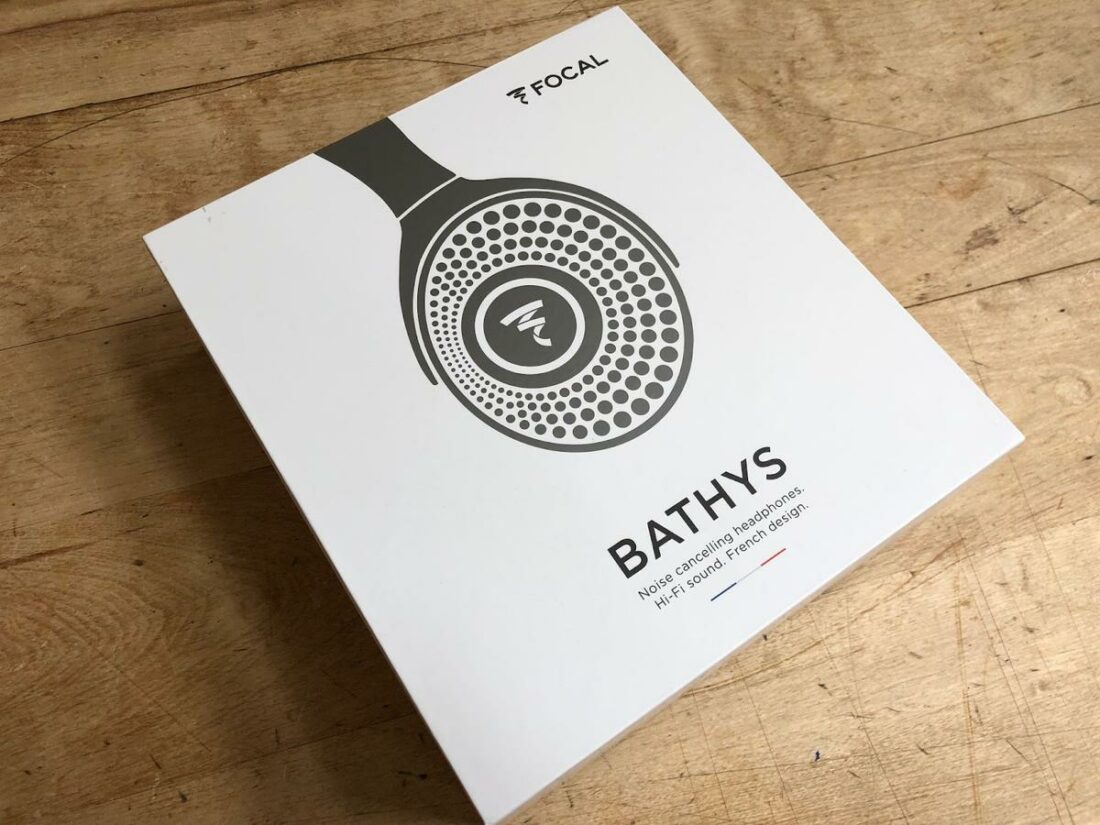
Packaging
The Bathys packaging feels like a typical Focal product but is a bit simpler than the luxurious unboxing experience provided by their higher-end models. An attractive white box adorned with a stylized image of the headphones opens to reveal the included zippered grey hard case. The headphones and accessories are nestled inside the case.
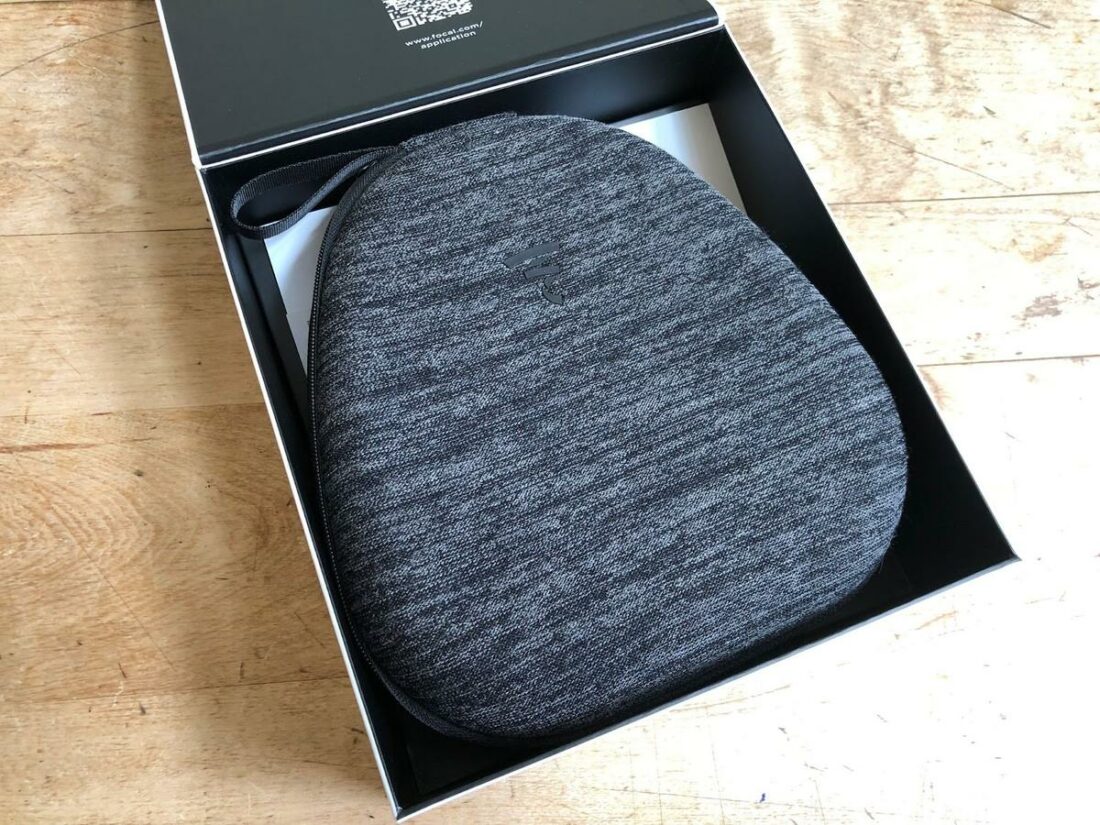
In the box
- Focal Bathys
- 3.5mm – 3.5mm cable (1.2m)
- USB-c – USB-c cable (1.2m)
- Rigid carrying case
- Quick start guide
- Focal at a glance pamphlet
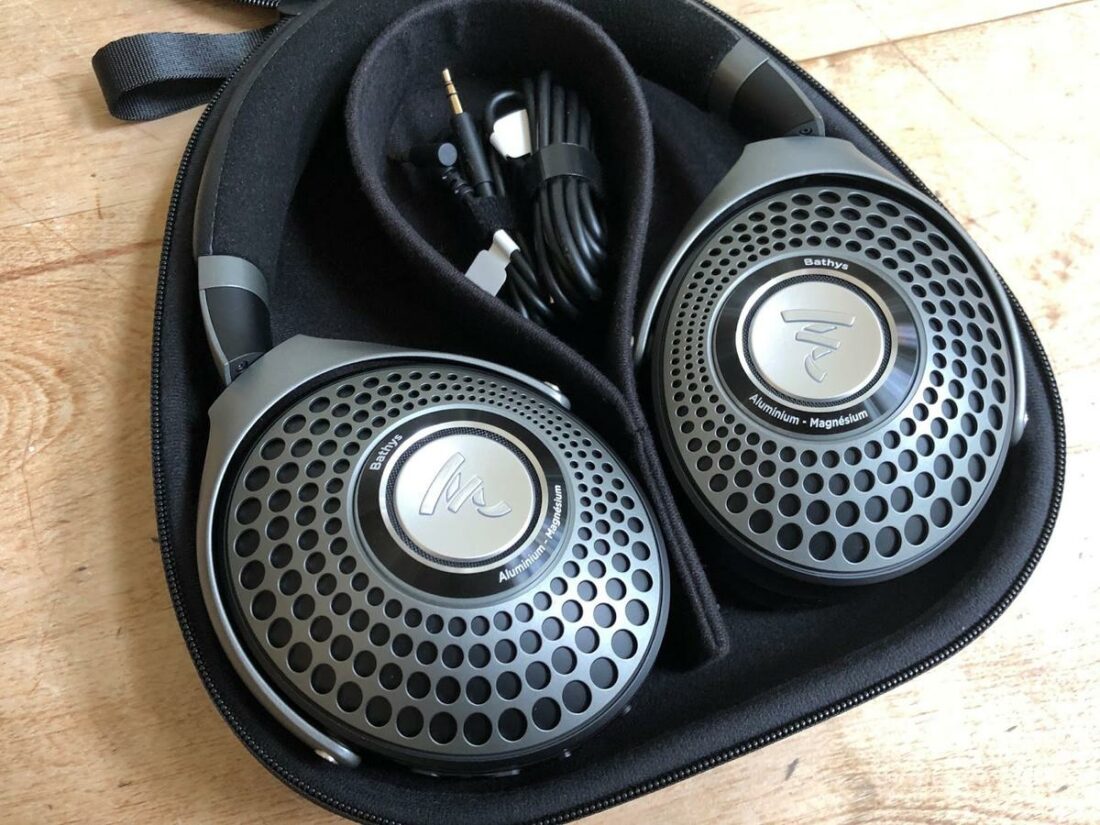
The accessories meet expectations for this sort of device. The carrying case is the predictably excellent fabric case design that comes with all Focal headphones. It’s attractive, tough, and nicely sculpted to fit the headphones and cables tightly.
However, the included cables seem like Focal was merely shooting for meeting the minimum requirements. Both the dual 3.5mm TRS analog and USB-c cables are 1.2m in length and constructed of inexpensive-feeling, basic black plastic.
Such obvious cost-cutting is a surprise with a pair of $800 headphones. First impressions matter and the cables don’t set the right tone.
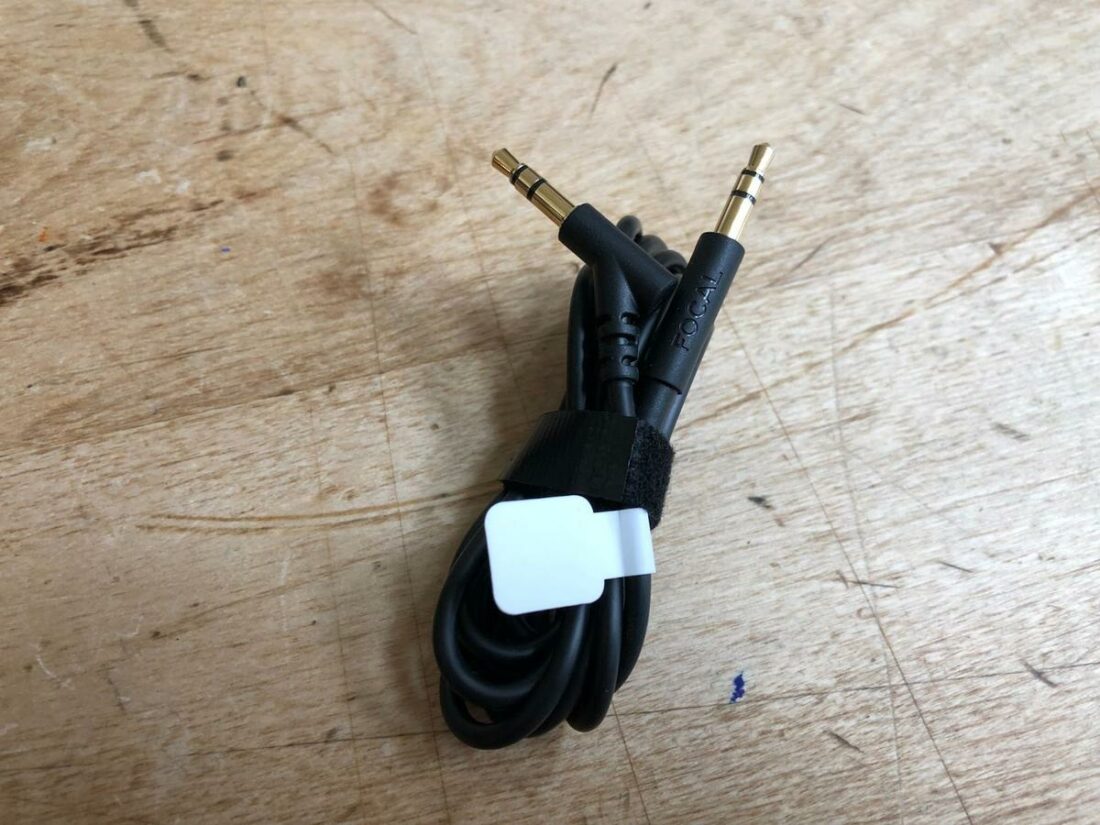
Design
One glance at the Bathys, and you know they are a pair of Focal headphones. Back are the familiar distinctive rings of concentric circles forming the outer cup grills. These appear to be made of aluminum, and the grey color matches the magnesium yokes perfectly.
The cup shape is a little more oval than round, and reportedly, the cups are 20-25% smaller than a typical Focal ear cup.
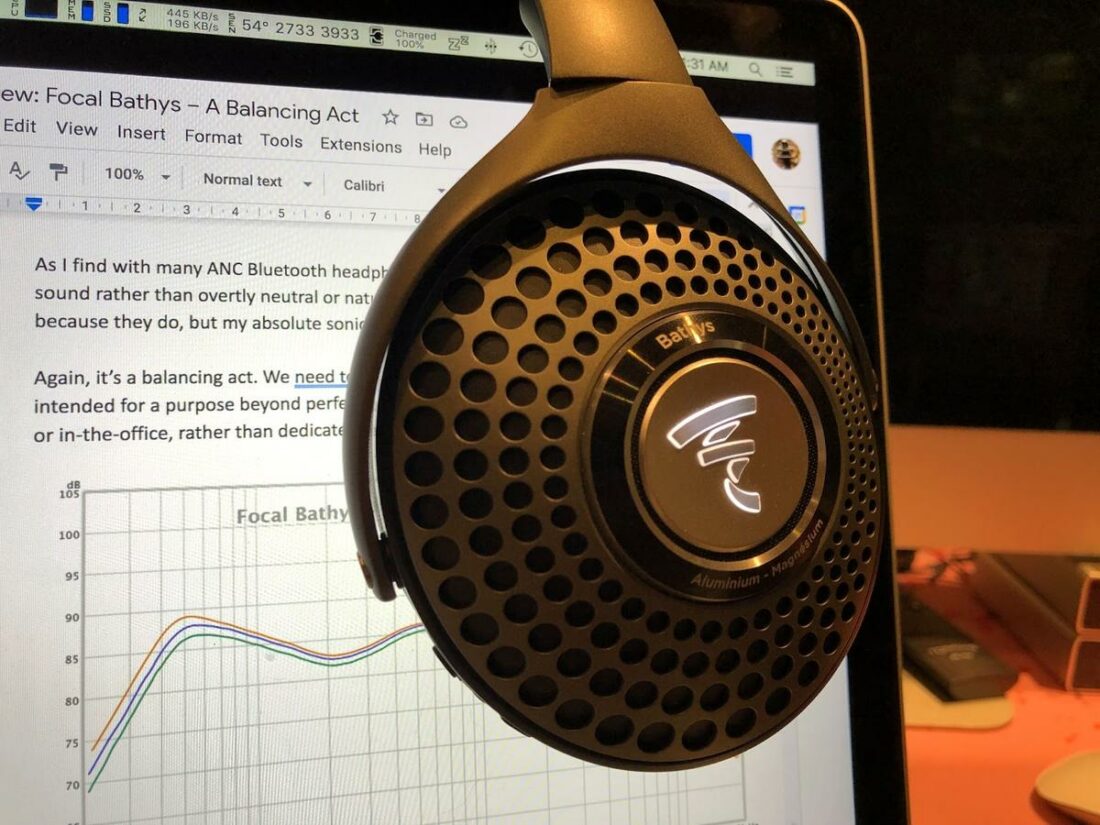
When powered on, the Focal logo in the center of the cup is backlit by a white LED for a classy, high-tech look. If desired, the light can be disabled in the app.
The cups themselves are constructed of black plastic, with most controls and ports on the bottom of the right cup surface. Three corresponding buttons control volume, play/pause, skip, and the Bluetooth connection. A three-position switch moves between Off/DAC mode/On. A separate round button triggers a voice assistant (Alexa, Hey Google, Siri, etc.).
A single button on the lower back of the left cup allows the wearer to toggle between Transparent and ANC mode (quick press) and Soft and Silent ANC modes (long press).
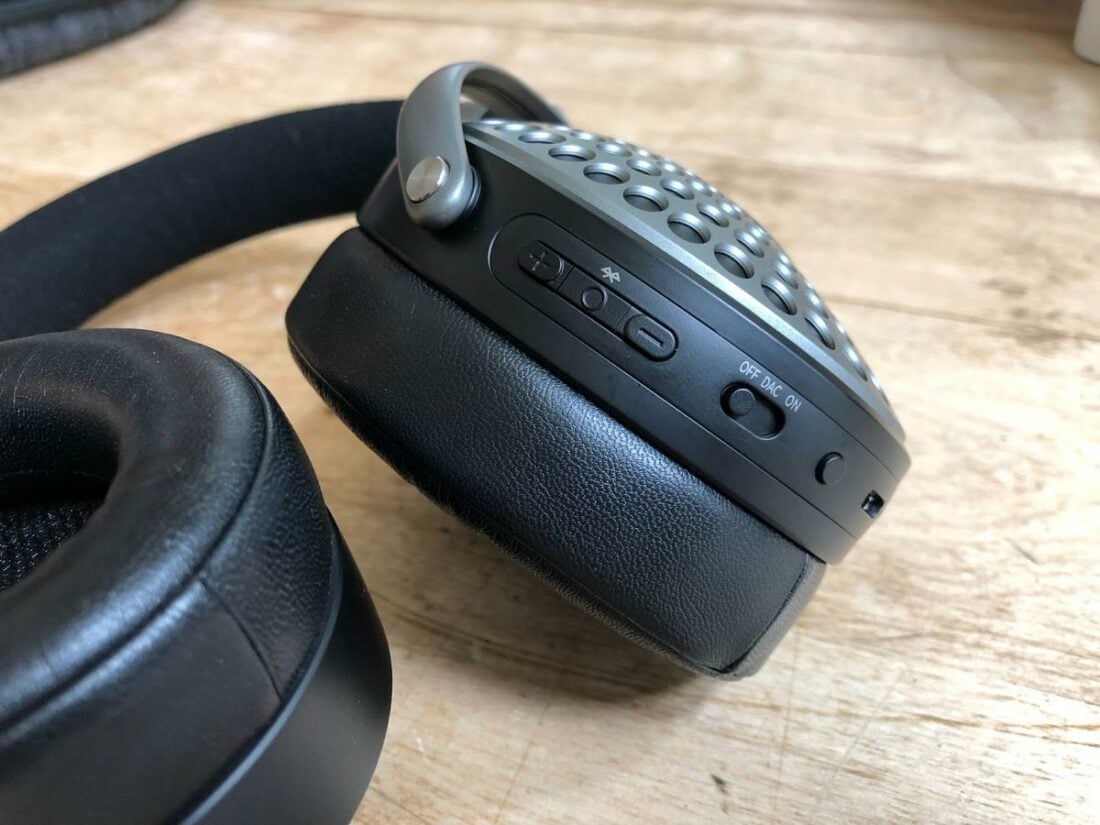
The Transparent mode uses external microphones to pass along environmental noise. It works well, although it has a similar artificially hollow sound quality that most noise-cancelling headphones exhibit in this mode.
You can toggle ANC between a low ‘Soft’ mode, intended for general use at home or in the office, and a stronger ‘Silent’ mode, designed for high background noise when travelling on planes, trains, etc.
The Bathys will not function without Soft, Silent, or Transparent mode enabled.
Regardless of the connection (Bluetooth, 3.5mm, or USB-c), there is no passive listening option that does not use the battery or digital signal processing (DSP). Fortunately, battery life ranges from 30-42 hours depending on connection type, and a 15-minute fast-charge will yield 5 hours of playtime.
At slightly under 30mm wide, the headband is narrower than usual but remains comfortable thanks to the Bathys’ relatively light weight (350g) and plush microfibre padding on the band’s bottom.
The band’s top is smooth black leather that matches the clip-on ear pads. The inner lower surface of the pads appears to be a synthetic fabric rather than leather, which likely helps tune the sound and improve breathability.
Overall comfort is quite good, although I initially found the clamping force a bit high for my noggin.
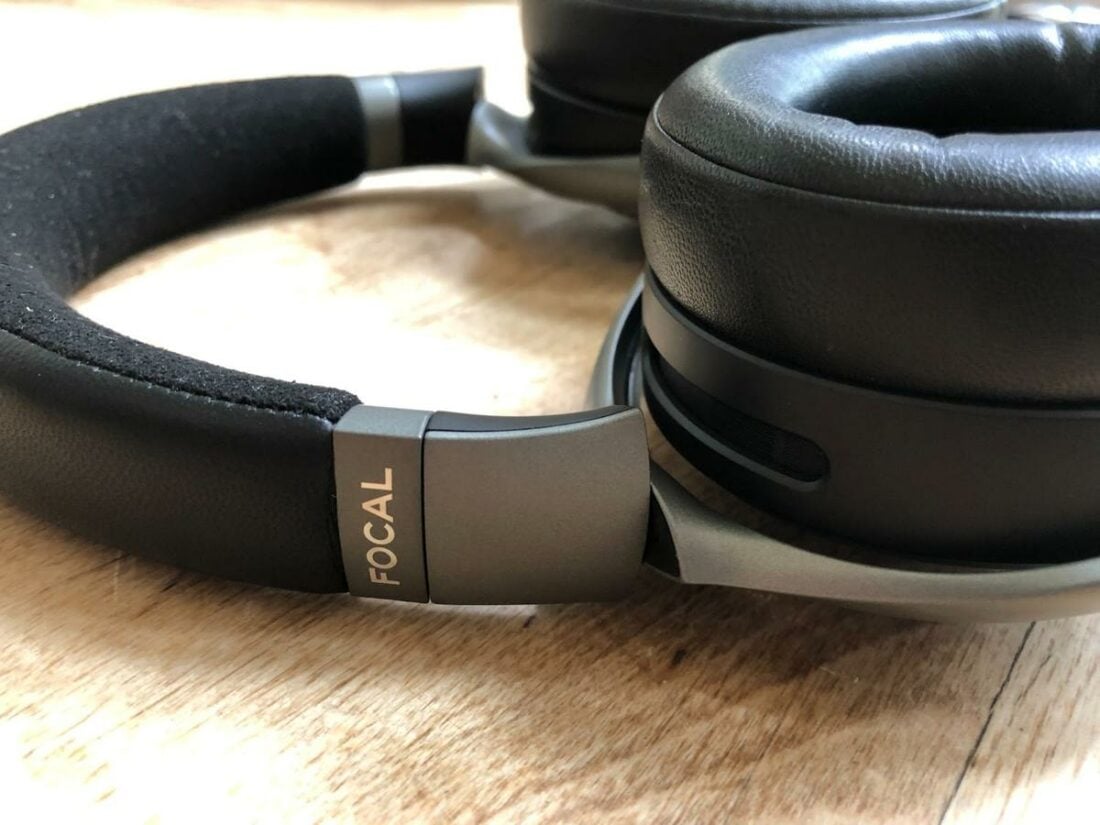
The Bathys are undeniably Focal headphones. However, their slightly shrunken size and more visible plastic make them feel somewhat less premium than their higher-end brethren. Of course, lowering the price, reducing weight, and adding additional electronic components means compromises must be made.
Focal does a good job maintaining its brand image, but the Bathys feel closer to the consumer ANC headphones they compete with than the higher-end Focal products I expect.
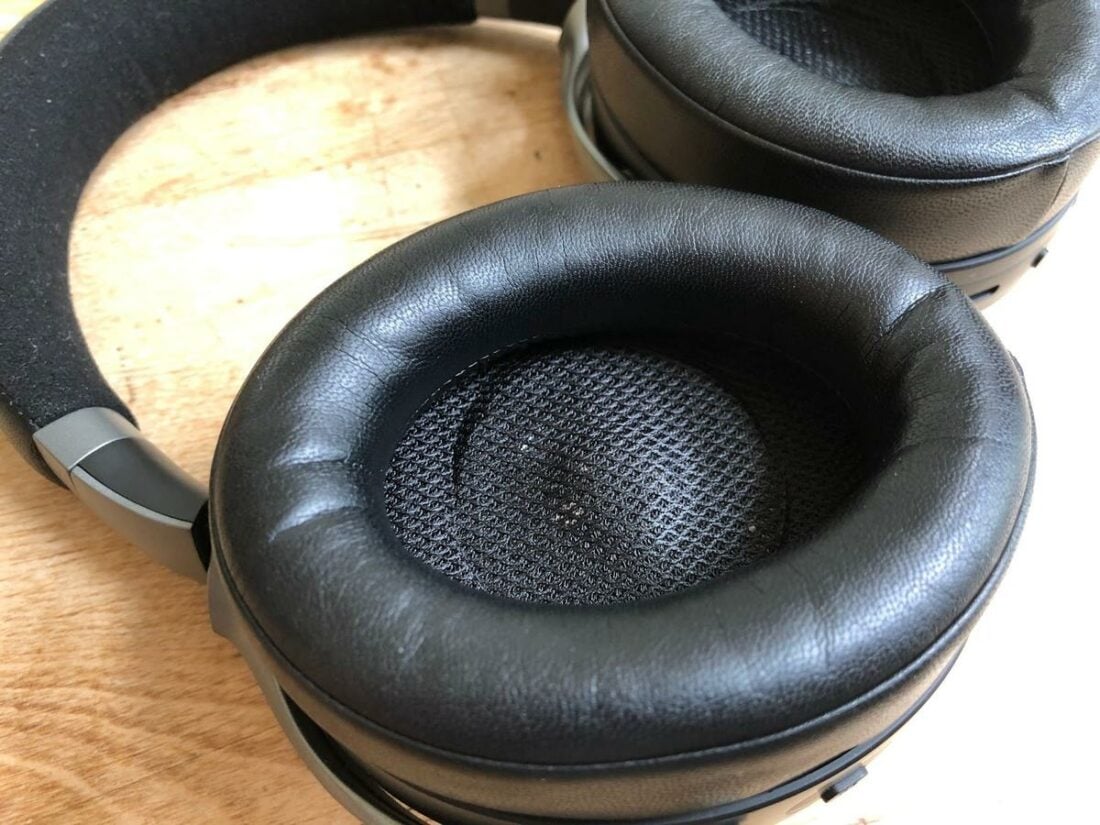
Internals
Focal is quick to announce that the 40mm Aluminum/Magnesium domed drivers borrow technology from the Celestee model and are proudly made in France. These new drivers utilize the same size dome and surround, but the magnet is a bit smaller to reduce the weight.
The Bathys have eight microphones that use Clear Voice Capture microphone technology to improve clarity. There are no user-adjustable environmental noise cancelling (ENC) options for the mics, but overall, I find the microphone quality very good, and even in a noisy environment, my voice is easily discernible.
Microphone recordings in a quiet and noisy environment are below.
Connectivity
The Bathys support Bluetooth 5.1 with SBC, AAC, Apt-X, and Apt-X Adaptive codecs. I tested Apt-X with the Hidizs AP80 PRO-X DAP and AAC with my iPhone (the highest quality codec supported). The AP80 PRO-X proved the best test platform as it supports all 3 of the Bathys connection modes (Bluetooth, digital DAC, analog 3.5mm).
For the highest quality sound, the Bathys feature an onboard DAC/amp that functions in DAC mode when the USB-c cable is connected between the headphones and the source. The onboard DAC supports 24-bit/192kHz playback.
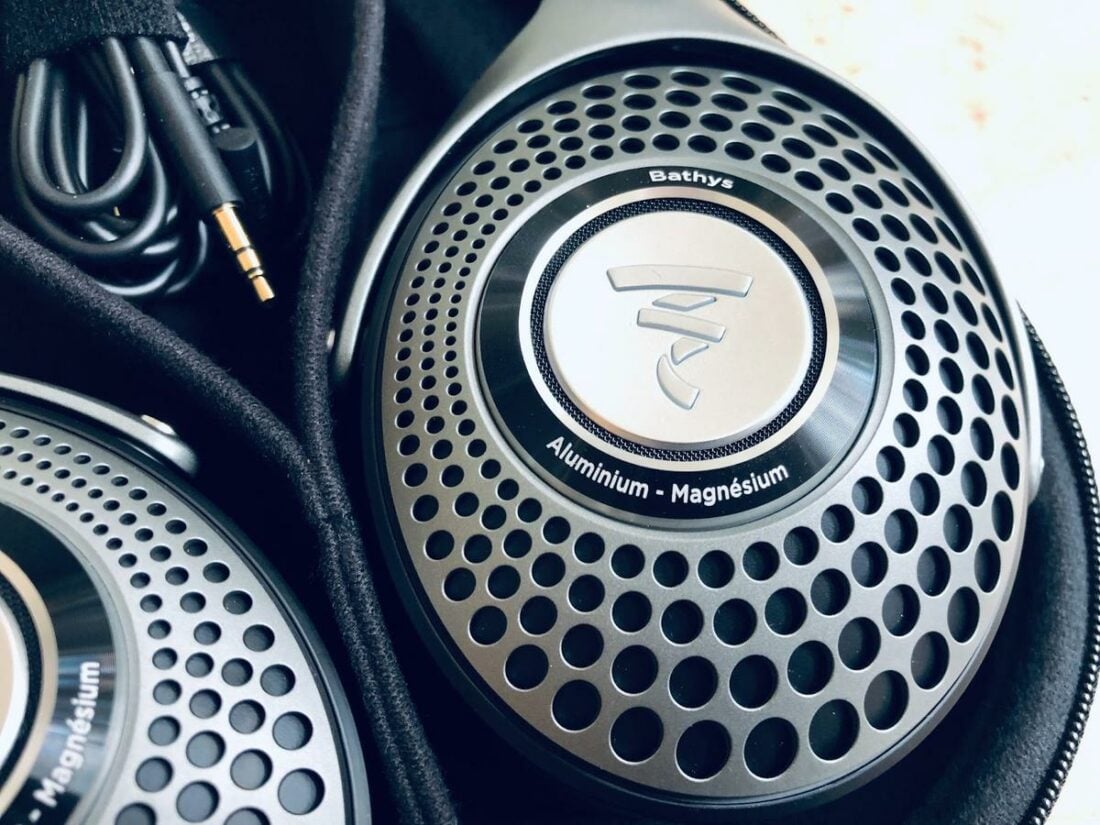
I ran into a hiccup with this mode when switching back and forth with Bluetooth, although after resetting the headphones and letting them sit for 15 minutes or so, I could reconnect wirelessly.
The other odd thing I encountered in DAC mode paired with the AP80 PRO-X is that the playback was FAR louder than the other connections (the volume set at 30 was similar to 70/100 with the other connection methods).
This may be due to a specific device setting in the Hidizs DAP or the HiBy OS. Focal reported that this is non-typical behavior, and the volume should be relatively similar between all connection methods.
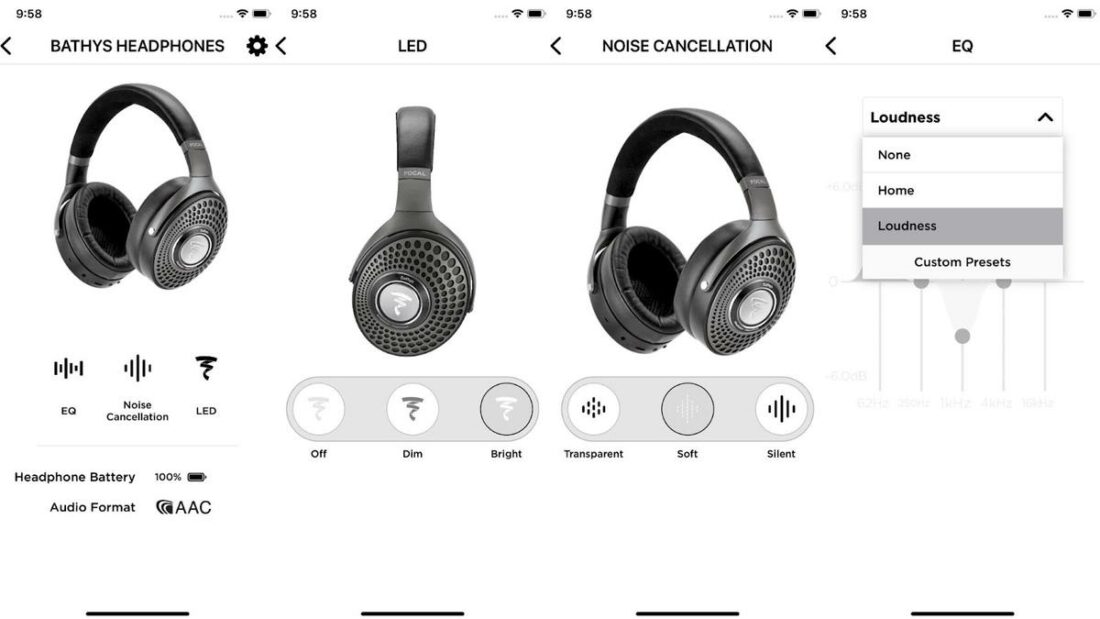
App
The newly consolidated Naim/Focal app is relatively easy to use. However, I admit to being initially stymied as the app defaults to searching for Naim devices and has to be switched to Focal mode before it will discover the Bathys.
The app allows for controlling the LED, switching between Transparent/Soft/Silent ANC modes, voice assistants, and a basic EQ. It’s relatively lean as far as available options, but this results in an easy-to-understand and clean interface.
Focal Bathys Sound
Focal says it took three years to develop the Bathys. They told me the big trick was to balance ANC with sound quality. Previous prototypes had stronger noise cancellation, but the sound quality suffered. Conversely, prototypes with improved sonics suffered from worse ANC functionality. The Bathys represent the best balance between the two.
We all know that’s how it works, right?
At this point in the game, Bluetooth ANC headphones compromise functionality and absolute audio reproduction. As the tech improves, both of these aspects get better. The experience of listening to headphones with active noise cancellation signal processing is far different from a pair of regular ‘dumb’ headphones.
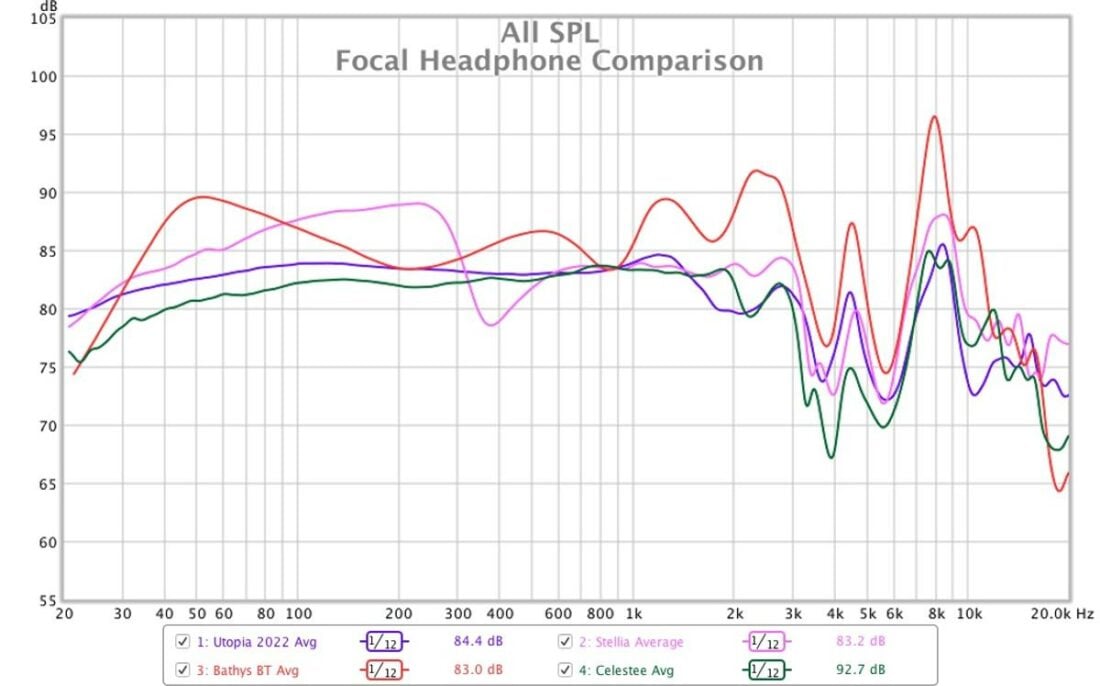
Some companies try to capture the best of both worlds by including a passive, unamplified mode that disables onboard circuitry. I’ve yet to discover a pair that sounds ‘right’ in this mode. Almost unfailingly, ANC headphones require the electronics to sound as intended.
Focal clearly realized this limitation, and the Bathys listening modes vary between high noise cancellation (Silent) and low (Soft). Transparent is a useful feature in some situations but doesn’t provide the best listening experience due to a prevalent hiss. For my testing, I primarily used the Soft ANC mode.
If you’ve never listened to ANC headphones, the microphones pick up low-frequency noise, and the headphones generate a sound that’s phase-inverted by 180 degrees to the unwanted noise, resulting in the two sounds cancelling each other out. Without music playing, the resulting experience is somewhat unnaturally deadened, and when too strong can result in a fatiguing feeling of pressure.
The Bathys are relatively light-handed in their ANC implementation, although the Silent mode is, as intended, noticeably more potent than the Soft setting.
As I find with many ANC Bluetooth headphones, the Bathys have a somewhat processed sound rather than overtly neutral or natural. That’s not to say they don’t sound good, because they do, but my absolute sonic expectations are different for this type of cans.
Again, it’s a balancing act. We need to remember that wireless ANC headphones are intended for a purpose beyond perfect music reproduction. They are designed for on-the-go, or in-the-office, rather than dedicated critical listening.
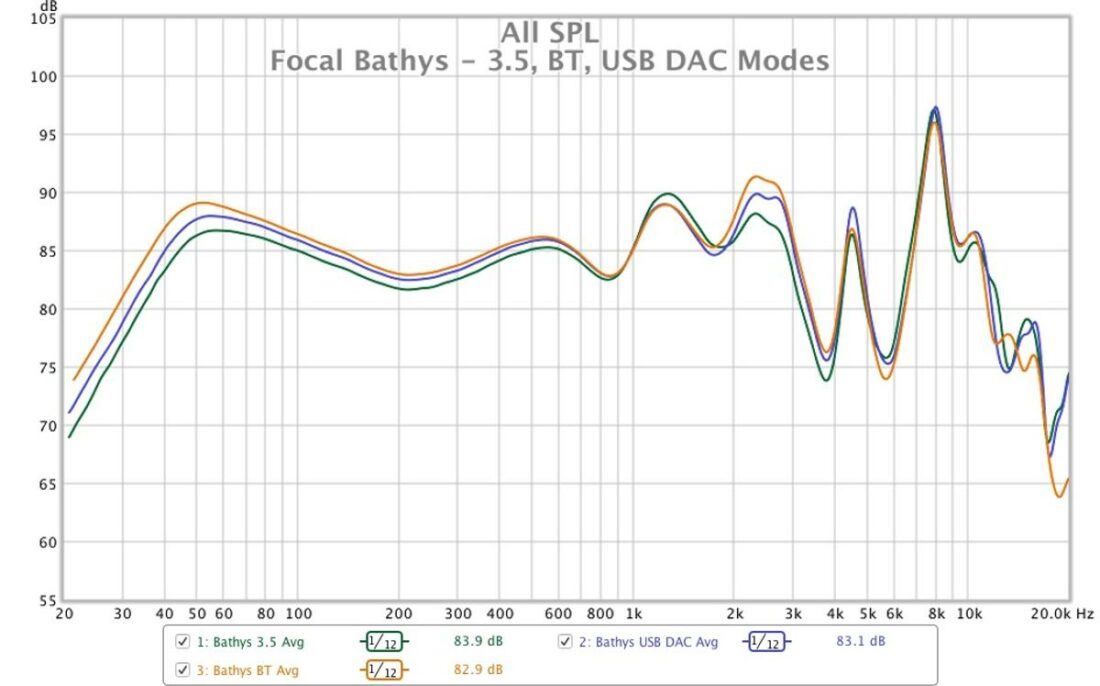
Bass
Bass frequencies tend to get lost in noisy environments, so as a result, portable headphones are often closed-back and somewhat bass-boosted. As expected, the Bathys follow this general trend with a mid-bass peak but a fairly steep drop-off of sub-bass frequencies below that.
Bass is present, tight, and controlled and sounds quite satisfying with anything from Rock to Pop.
Midrange
The midrange stands out in the mix and becomes quite forward at higher frequencies. Vocals are especially prominent, which certainly improves their usage as a teleconferencing headset if that is important to you. This forwardness gives the impression of intimacy, and the overall soundstage isn’t especially spacious feeling.
Instead, you feel ensconced in your own listening booth, which is likely the intent for a pair of headphones for commuting. Creating the impression of privacy and personal space is desirable in this arena.
Treble
The treble remains relatively restrained and polite despite strong spikes around 2.5 and 8 kHz. This mild manner may be at the expense of overall dynamics, excitement, and impact. The Bathys remain non-fatiguing with extended listening sessions, a critical attribute if listening to them for a long plane ride or over many hours at your desk.
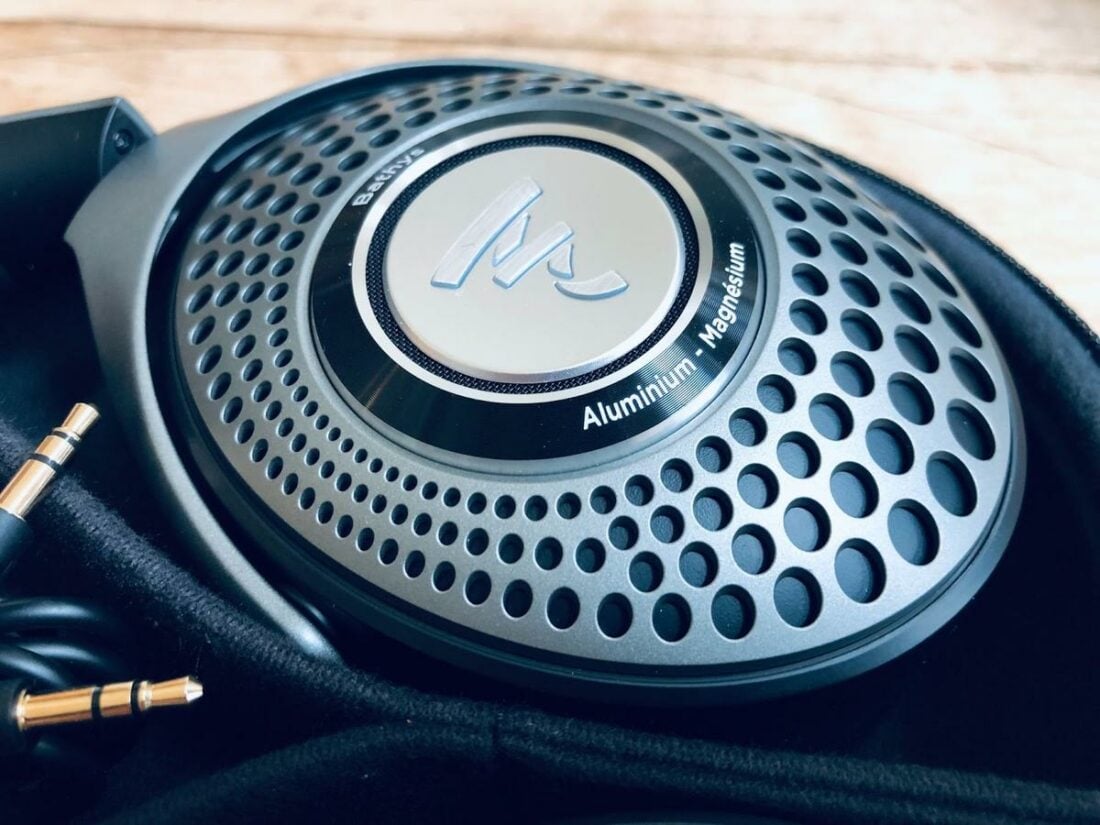
Where to Buy
Conclusion
Wireless ANC headphones aren’t my first choice if I were to select a single pair of headphones for music reproduction. However, if I’m travelling or looking to create privacy in a public space and want to benefit from a lack of cords tethering my devices, these headphones fit the bill admirably.
The Bathys seem intended to redefine the wireless ANC headphone market.
I’m just not sure they do. I wish Focal had targeted a little less balance and actually compromised a little less. For Focal owners and lovers looking to add a pair of ANC headphones to their stable, the Bathys are a no-brainer purchase.
For everyone else, the value proposition is a little less clear. At a 30% or so premium in price over the leaders in this market, I’m not sure that Focal has done enough to differentiate. The Bathys feel a bit too much like the other guys.
The Magnesium yokes and Aluminum cup grills look and feel great – pure Focal decadence. But the impact is lessened by the plastic bits on the underside of the band. Real leather band and pads – terrific. The included cables – a disappointment.
I would take a few more grams and, if necessary, a few more dollars to have the Bathys feel a little more premium and more in step with the rest of the Focal lineup. It was likely inevitable that the Bathys would be the odd stepchild, but I hoped Focal could solve all the inherent compromises of wireless ANC.
They sound good. The ANC works well. Balance achieved.
But for pure music listening, the Bathys understandably lag behind the rest of Focal’s traditional headphone lineup. And compared to the wireless ANC market, I’ll leave it up to you to decide if the cost difference is justified.
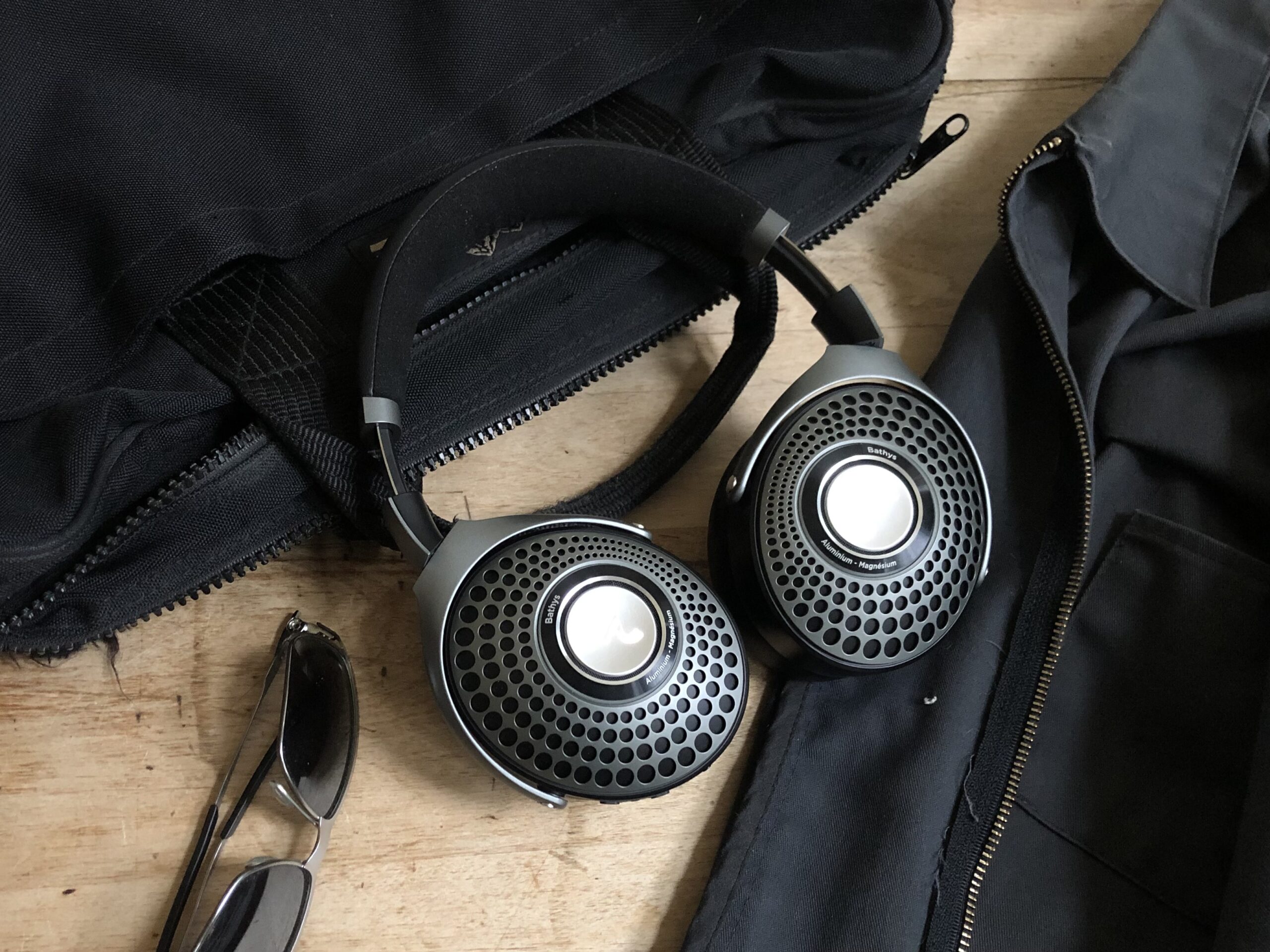
I wonder how these would compare to a B&W PX I’ve had for a few years and on the whole are just fine. For comparison I have a Focal Clear I use at home and am really pleased with them. I am definitely a Focal fan but not sure if it’s worth “upgrading” to the Bathys.
I’m a huge fan of the Clear (and most of the Focal lineup, if I’m being honest). Haven’t tried the PX, so I can’t speak to the differences, I’m afraid.
Nice review, but a bit more indepthe comparison with the competition would be appreciated. How much better is this compared to the Sony and Sennheiser models?
Thank you. I absolutely get what you are saying. Unfortunately, I don’t have those headphones on hand, and I can’t compare sound specifics by memory.
I visited an audio store today that had a pair and spent the better part of an hour listening with them. They are head and shoulders above my PX. They are very good. I have since gifted my wife my PX and am awaiting the arrival of my new Bathys.
Awesome! Thank you for sharing your experience!
Cannot believe this. I did exactly the same changed my mind and bought the Focal Bathys as well. Although I have heard the B&O H95 are meant to sound better. My Bathys arrived today and I am already so impressed. Nice to hear more reviews on these headphones.
This is the best of the reviews I’ve read so far. Thanks Trav. I didn’t expect to see plastic buttons on $800 cans. This is a future breakdown point, most likely, given the amount of time they’ll be accessed. Sound quality matters and the balance with ANC and wired cans is hard to strike but the Bathys seem to do it. For me it’s a choice between the Px8 (which I have on a 30d no hassle return from B&W) and these which I haven’t heard. Would the Bathys have scored an extra 1/2 point had they come with machined aluminium switches / buttons, higher quality headband underside, not to mention decent cables?
Hey Paul. Thanks for the kind words! Yes, I think it’s fair to think that slightly higher finish materials would have improved my impression. It’s all a balance between asking a premium asking price and delivering on that experience.
Mannnn I am in the same boat but haven’t heard neither one… I suspect bathys is automatically a better headphone then the px8 just because its a focal? And have heard the px7 and the s2 hmmm how far does a px8 leaps a head of px7 s2, iI think not so much maybe. But bathys seems to go for even a more audiophile aproach to anc headphones then anyone in this industry.
Hi Trav
thanks for the review. I typically do not provide add-on reviews but given the PX8 and Bathys are new on the market and not that easily available I thought I would add my 2 cents for Folks to help them in their decision making. After reading all reviews I was set to buy the PX8 but stepped in a different store to listen to the Bathys (please not I have both the Stellia’s and Utopia’s). I was not impressed although the design, looks were definitely Focals. I went to listen to the PX8 and was imnpressed ALTHOUGH the pads were wet/humid after only 20 minutes of listening. I was almost set at buying them but the beige color I wanted was not available so I thought I would listen again to the Bathys (now having smth to compare them against). And surprise surprise I bought the Bathys. Why. The PX8 I would call ‘showy’. The Bathy’s were less exposed but truer to good audio quality. ‘Showy’ means also more fatiguing. The Bathys I can keep on my head continuously (I don’t). The earcups of the Bathys are surrounding my bigger (it seems) ears while the PX8 are pressing against them (yes in a comfy manner and better isolating but causing the sweating). Sweating does not appear with the Bathys. Now are they both audiophile quality. No. But taking the ANC limitations and Bluetooth limitations if you want to have something occasionally with you rather than trucking cables, DACs with you (I typically do) then they do what they are supposed to do. If you are seeking utmost quality then I would have purchased neither. And there are a couple of things I would change with Bathys (ability to turn off the ANC completely as e.g. I listen to them on the go but in quiet environments so do not need the ANC deteriorating sound quality). AptX HD probably (I am not techie here) or LDAC probably would be handy and a couple of minor things. To add I listened to Bathys via my Samsung phone (lousy quality even when streaming Tidal) and my DAPs (AK SP2000 and SP 1000 and Sony’s WM1Z (I own Sony but never can remember the name). This also made me realize how poor streaming is compared to well ripped flac files but this is on a personal note. Hearing is so subjective I will not preach to others. Make good choices. Best
Thank you for the well-balanced review. In my world, wireless headphones are far more functional and utilitarian than wired although I really like the comfort, appearance and shear luxury of wired headphones. I love my ZMFs but the fact is that I barely use them. I think the time has come for high end bling in the wireless world.
It looks like Focal made a small step in the right direction but probably too small given the price to quality ratio. I would pay $1500 for a truly amazing, high-end bluetooth headphone but it looks like I’m still waiting for that to happen.
Hi Ted. Thanks for the kind words! I seem to be in the minority of folks hoping for a less ANC and DSP experience with the Bathys, as there are tons of happy reports out there. If you get a chance to audition the Bathys, please let us know what you think of them.
Walked into a store the other day to try out the Bathys, PX8, Momentum 4 and a few other ANC headphone as I gave my XM4 to my wife. I told the shop owner I just wanted to try and will decide which to buy at a later date.
a few hours later I walked out with a Bathys on my head.
Howdy Trav,
Your review is by far the most honest review I have read on the Bathys.
I love the Focal sound and I have three other Focal headphones: Utopia 2020, Stellia, and the Elgia.
Since I am a software architect and travel a lot, I decided to buy the Bathys based on all the other reviews promoting them as ‘almost’ wired sound. Compared to my other three Focals, the Bathys sound ‘flat’ and ‘unimpressive’. The soundstage is practically non-existent using my Shanling M7 or M9 with all different kinds of music in FLAC.
Unless people need the lightest possible travel weight, I would recommend they buy the Focal Elgia for $400 new on Amazon and spend ~$200 to ~$300 on a good quality balanced cable. The sound is much better than the Bathys for less money.
All the best,
Aggie85
Hey. It seems you and I are in the minority who hear the Bathys differently. I love the Focal lineup and have gushed about many of their headphones. ANC and DSP just sounds different to my ears. Whether you are satisfied probably depends on your expectations.
Hi. How did you get them in dac mode? The app said it could not find the headphone so what do I need to do to get them to find them?
Put the switch in the middle (DAC mode) and connect via the USB cable. The Focal app will only work with a Bluetooth connection.